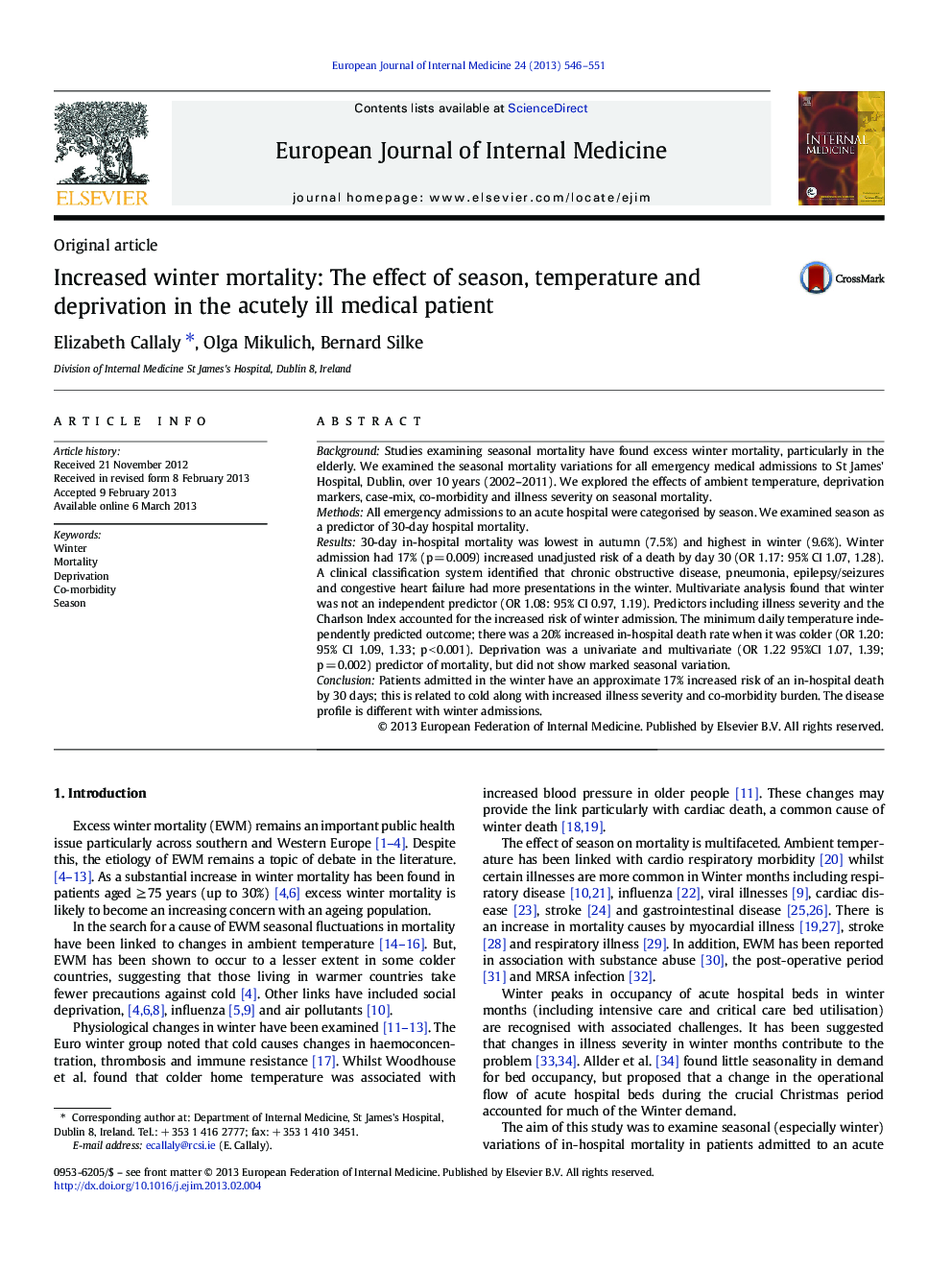| Article ID | Journal | Published Year | Pages | File Type |
|---|---|---|---|---|
| 6151758 | European Journal of Internal Medicine | 2013 | 6 Pages |
BackgroundStudies examining seasonal mortality have found excess winter mortality, particularly in the elderly. We examined the seasonal mortality variations for all emergency medical admissions to St James' Hospital, Dublin, over 10 years (2002-2011). We explored the effects of ambient temperature, deprivation markers, case-mix, co-morbidity and illness severity on seasonal mortality.MethodsAll emergency admissions to an acute hospital were categorised by season. We examined season as a predictor of 30-day hospital mortality.Results30-day in-hospital mortality was lowest in autumn (7.5%) and highest in winter (9.6%). Winter admission had 17% (p = 0.009) increased unadjusted risk of a death by day 30 (OR 1.17: 95% CI 1.07, 1.28). A clinical classification system identified that chronic obstructive disease, pneumonia, epilepsy/seizures and congestive heart failure had more presentations in the winter. Multivariate analysis found that winter was not an independent predictor (OR 1.08: 95% CI 0.97, 1.19). Predictors including illness severity and the Charlson Index accounted for the increased risk of winter admission. The minimum daily temperature independently predicted outcome; there was a 20% increased in-hospital death rate when it was colder (OR 1.20: 95% CI 1.09, 1.33; p < 0.001). Deprivation was a univariate and multivariate (OR 1.22 95%CI 1.07, 1.39; p = 0.002) predictor of mortality, but did not show marked seasonal variation.ConclusionPatients admitted in the winter have an approximate 17% increased risk of an in-hospital death by 30 days; this is related to cold along with increased illness severity and co-morbidity burden. The disease profile is different with winter admissions.
